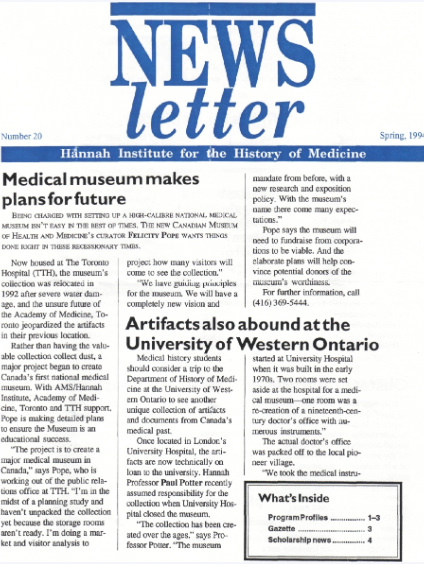By David South, Development Challenges, South-South Solutions

In the last 50 years, the domestication of high technology – bringing cheaper access to everything from personal computers to digital cameras and applications like global positioning systems (GPS) – has transformed millions of lives and the way business is done. In the next 50 years, biotechnology is set to do the same.
One aspect of biotechnology, genetic engineering (GE), has been lambasted by protest groups for being “unnatural” and driven by profit and the privatisation of nature. It has been seen as the domain of the big and powerful and remote from everyday needs. But now Africa is pioneering new approaches that are rooted in the real challenges faced by African people – and proving world-class scientific research can take place in Africa.
One initiative in South Africa aims to help small and medium sized farmers save their maize (corn) crops. The Food and Agriculture Foundation estimates that 854 million people in the world do not have sufficient food for an active and healthy life, and food security is a serious issue in Africa.
Maize streak viruses (MSV) are geminiviruses that destroy maize crops, and are a big problem throughout sub-Saharan Africa and the Indian Ocean islands. It leaves characteristic yellow-white streaks across the plant’s leaves, and produces deformed corn cobs, often severely dwarfed. Over half of the food supply for people in sub-Saharan Africa comes from maize, but MSV can wipe out an entire farmer’s crop.
Scientists at the University of Cape Town (www.uct.ac.za), South Africa, and the South African seed company PANNAR Pty Ltd have developed a resistant variety of maize that they hope will alleviate food shortages as well as promote the reputation of genetically engineered (GE) foods in Africa.
The MSV-resistant maize is the first GE crop developed and tested solely by Africans. Field trials will soon begin to make sure there are no unintended consequences on the environment and animal life dependent on maize.
Maize arrived in Africa in the 1500s from Mexico, and quickly displaced native food crops like sorghum and millet. Maize streak virus is an endemic pathogen of native African grasses, and is passed on to maize plants by leaf hopping insects.
The technology being developed can also be applied to other geminiviruses, like Wheat dwarf virus (WDV), sugarcane streak virus, barley, oats and millet. The scientists hope this development will prove the safety of GE foods, and address the criticism it is only a profit-driven technology by selling the seeds for minimal profit to subsistence farmers.
“If the GE maize turns out to be as hardy in the field as in the greenhouse,” said Dr Dionne Shepherd, who leads the research, “it could have a great impact on small and medium sized farmers. These are the farmers who need it the most, since they can’t afford preventative measures such as insecticides to control the leafhopper which transmits the disease. When small scale farmers lose 100 per cent of their crop (which they often do) due to maize streak disease, they not only lose any income they would have obtained selling their excess maize, but they also lose a massive chunk of their annual food supply.”
Other African institutions are working on GE crops with international partners, but, Shepherd, says, “The reason the MSV-resistant maize could improve the reputation of GE in Africa, is that international biotech partners, especially in the private sector, are generally not interested in solving problems that are unique to Africa, and Africans are therefore suspicious of their motives when they try to sell or even give away GE food.”
“MSV is endemic to sub-Saharan Africa, and our MSV-resistant maize was developed by Africans for Africa with no ulterior motives, which will hopefully make Africans accept the technology.”
“I think it should attract more funding, because once international funders see that world-class research can happen in Africa, they may be more willing to commit funds.”
In another development, African science is tackling the scourge of malaria on the continent. Caused by a parasite carried by mosquitoes, it kills more than a million people a year and makes 300 million more seriously ill (World Health Organisation). Ninety per cent of the deaths are in Africa south of the Sahara, and most are children.
While bed nets, insecticides and anti-malarial drugs are effective, the disease has become resistant to some drugs and work on a vaccine is slow.
Research in Kenya has found an effective way to both provide food and destroy mosquito larvae. The Nile tilapia – a highly nutritious fish – has long been known to feed on mosquito larvae. But nobody has made the connection between this fact and the fight against malaria. Francois Omlin, a researcher at the International Centre of Insect Physiology and Ecology in Nairobi, Kenya (www.icipe.org), has conducted the first field tests to prove this approach.
“The tilapia species was never tested in the field for its ability to eat mosquito larvae,” he told Reuters.
Ten days after introducing the tilapia to a pond, they had destroyed most of the larvae and after 41 weeks the number of mosquitoes fell by 94 per cent, according to Omlin.
This means two important goals can be served by harvesting tilapia fish: greater access for Africans to the nutritious fish, and a dramatic reduction in mosquito-borne malaria.
Published: September 2007
Resources
- International Centre of Insect Physiology and Ecology: www.icipe.org.
- More on tilapia as food: www.washingtonpost.com
- More about corn in the African diet: www.congocookbook.com

Development Challenges, South-South Solutions was launched as an e-newsletter in 2006 by UNDP’s South-South Cooperation Unit (now the United Nations Office for South-South Cooperation) based in New York, USA. It led on profiling the rise of the global South as an economic powerhouse and was one of the first regular publications to champion the global South’s innovators, entrepreneurs, and pioneers. It tracked the key trends that are now so profoundly reshaping how development is seen and done. This includes the rapid take-up of mobile phones and information technology in the global South (as profiled in the first issue of magazine Southern Innovator), the move to becoming a majority urban world, a growing global innovator culture, and the plethora of solutions being developed in the global South to tackle its problems and improve living conditions and boost human development. The success of the e-newsletter led to the launch of the magazine Southern Innovator.



This work is licensed under a
Creative Commons Attribution-Noncommercial-No Derivative Works 3.0 License.
ORCID iD: https://orcid.org/0000-0001-5311-1052.
© David South Consulting 2023





You must be logged in to post a comment.